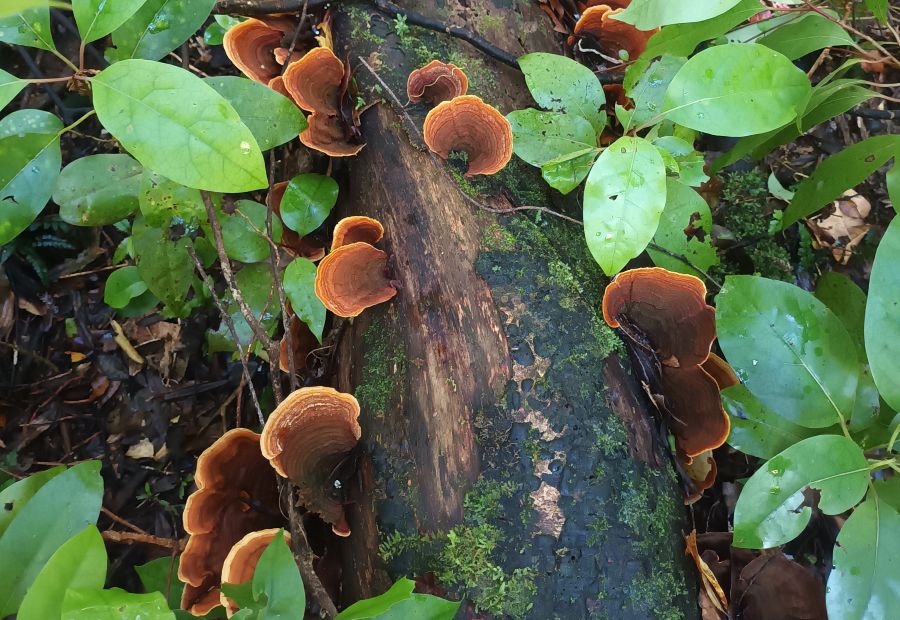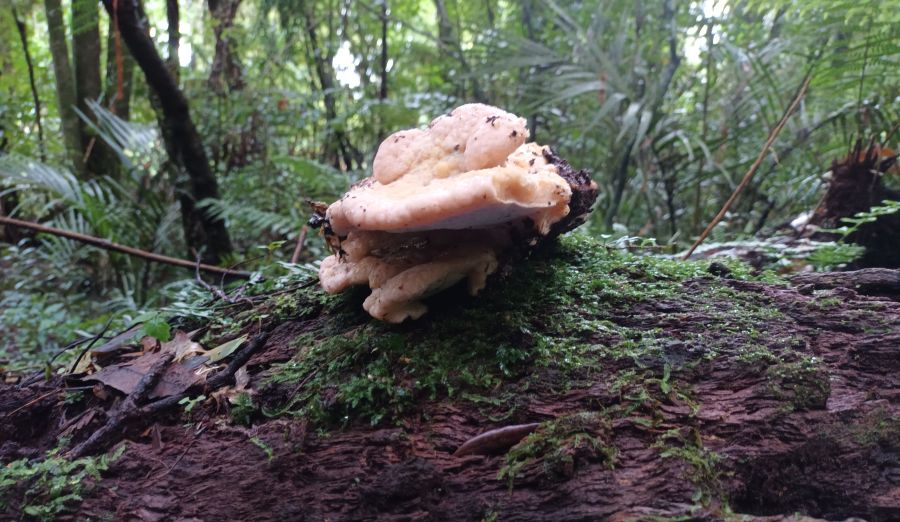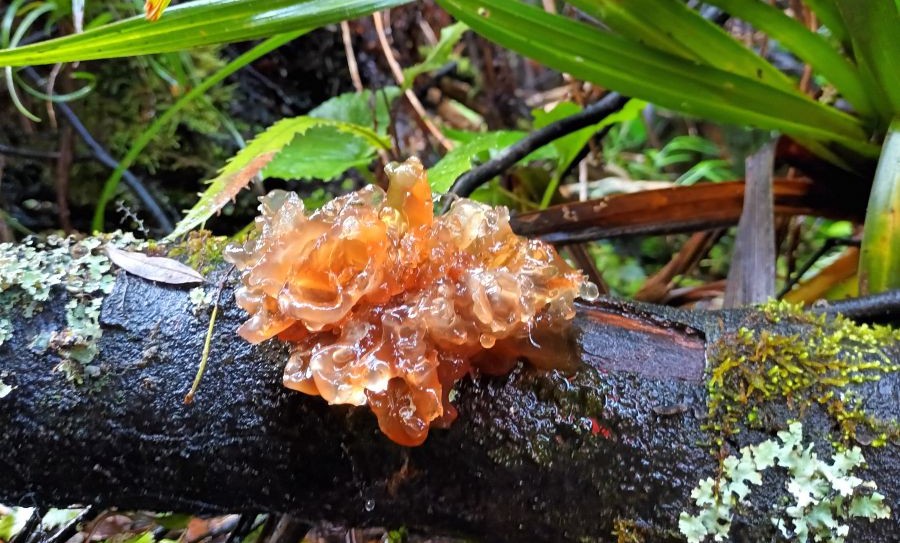Forest Health News: Fungi in the forest

Written by Scion Forest Pathologist Ian Hood for the June 2025 issue of Forest Health News.
Forests are complex ecosystems made up of a diversity of lifeforms interacting together to their mutual benefit. Apart from trees and shrubs, which provide habitats for birds, mammals, insects and other invertebrates, there is a multitude of microscopic, unseen organisms such as bacteria and viruses all playing their part. And then there are fungi.
Fungi are key!
They fill important roles vital to the wellbeing of the healthy forest. Many are saprophytes that decompose dead organic matter, some in the leaf litter or soil layers, others (along with certain tunnelling insects) in the wood of shed branches or fallen stems and even within still living trees. This process frees up stored energy and releases bound chemical elements (carbon and essential nutrients), making them available to other organisms in the forest. Without these decomposers there would be no recycling, and the forest would eventually collapse.
Fungi reproduce by means of fruitbodies of many forms in the litter or on decaying wood. These include shelves and brackets, flat crusts, coral-like forms, toadstools, puff balls, discs, stars and a variety of other types. Another group fundamental to trees and shrubs are the mycorrhizal fungi. These infect living tree roots in a beneficial way, modifying them into ‘fungus-roots’ or mycorrhizas.

They produce webs of fungal threads, or mycelia, that penetrate through the soil in a way that enables the tree to increase the absorption and uptake of essential nutrients by its roots. Many of these are also ‘larger fungi’ that form toadstool or other conspicuous fruitbodies on the forest floor at certain times of the year. The healthy forest depends upon a balanced interaction between these various living processes facilitated by the fungi.
Although the ecology of these forest fungi has been well investigated, not least by Scion1,2, much remains to be learned. Even simply cataloguing an inventory of the species present is a valuable contribution to knowledge of the forest biodiversity, providing a benchmark for comparison with other localities, between forest types or with changes in time.
A current study looking at the larger fungi, especially those present on wood, has been running for four years in podocarp-hardwood native forest that covers Maungatautari, an imposing volcanic mountain in the Waipa District. Administered by the Maungatautari Ecological Island Trust, Sanctuary Mountain Maungatautari is approximately 3,363 hectares of forest surrounded by a predator-proof fence, allowing native wildlife to flourish free from harmful pests. Five sites with woody debris present, approximately 10-45 × 10m in size, were established in an area of forest 1.3 km across on the southern slopes of the mountain. These sites were visited 18 times over the course of the four years.
Nearly 100 species of larger fungi have now been identified and representative dried specimens lodged as voucher collections in the Scion’s National Forest Culture Collection (NZFRIM). Photographs and drawings have been made in order to record the morphological features of these and additional fungi not yet fully identified. Seasonal fruiting patterns have been noted with some species. Results have been fully documented in three reports3. This information complements and augments records lodged on the iNaturalist website as well as those made during a fungal foraging day on Maungatautari organised by Fungal Network of New Zealand (FUNNZ) during their annual foray in 2023.

The study has its limitations. Because of its focus on larger fungi with more conspicuous fruitbodies, species in other groups with microscopic fruitbodies, such as leaf spot fungi4, have mostly not been considered. Some of these may cause disease if changed conditions upset the natural balance, or if they are introduced as exotic pathogens (e.g., the myrtle rust fungus, Austropuccinia psidii). Certain species with ephemeral fruitbodies that appear infrequently are likely to be missed. Other species with perennial fruitbodies, such as some crust fungi, may be immature when sampled, lacking spores or other microscopic features necessary for precise identifications. And then, of the many fungi present in our native forests there are some that have not yet been described and named. A number of the unidentified species in this study may fall into this category.
This study examined the macro- and micromorphological features of the fungi sampled; it was not feasible to use additional procedures such as isolation of cultures and DNA sequencing. Despite these restrictions, much has already been learned during this project about the fungi on Maungatautari and it is believed that a valuable addition is being made to our knowledge of the biodiversity on the mountain reserve.
This project has benefitted by the interest and support of Dr. Janelle Ward and others of the Maungatautari Ecological Island Trust as well as iwi groups associated with Maungatautari (Ngāti Koroki-Kahukura, Ngāti Hauā, Ngāti Raukawa). The help of people from Scion is also gratefully acknowledged.
1 Addison et al. (2025): Unravelling changes in the Pinus radiata root and soil microbiomes as a function of aridity. Global Change Biology 31 (4): e70165. https://doi.org/10.1111/gcb.70165
2 Hood, I.A. (2018): Decay fungi in fallen native trees. Forest Health News 285: 1-2. Scion (New Zealand Forest Research Institute). https://cdm20044.contentdm.oclc.org/digital/collection/p20044coll2/id/210
3 Hood, I.A. (2022, 2023, 2025): Fungi on Maungatautari: larger species in native forest, especially on wood. Initial report and supplements 1 and 2 (169pp., 73pp., 79pp., resp.). Unpublished. Maungatautari Ecological Island Trust, Scion.
4 Scion (2024): Common insect pests and diseases on New Zealand native plants.
Want more stories like this? Subscribe to Forest Health News and receive a quarterly collection of insights from our Ecology and Environment Research Group.
